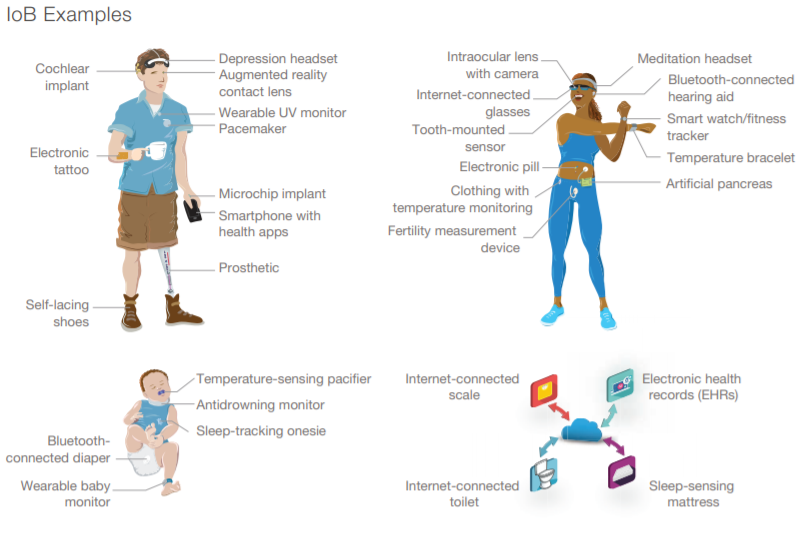WEF emerging tech is coveted by defense and intel communities for soldiers and spies: perspective
The World Economic Forum (WEF) publishes its Top 10 Emerging Technologies of 2023 report, which includes tech that is coveted by defense departments and intelligence communities for their soldiers and spies.
Brain-computer interfaces to usher-in a new era of transhumanism, flexible batteries to be implanted in smart clothes, and generative AI for brain decoding and intelligence reporting are all technologies currently being researched and developed for soldiers and spies.
These same technologies are also highlighted in the WEF report, which “outlines the technologies poised to positively impact society in the next three to five years.”
Let’s take a look at a few technologies listed in the report that are said to “positively impact society” but are also being developed for warfighting and spying purposes.
Flexible Neural Electronics to Usher-in a New Era of Transhumanism
Coming in at number eight in the WEF report are “flexible neural electronics.”
“Researchers have recently developed brain interfacing circuits on biocompatible materials that are soft and flexible,” the report reads.
“In recent years, brain-machine interfaces (BMIs) have gained visibility, igniting collective imaginations regarding the power and potential of one day controlling machines with thoughts”
World Economic Forum

Internet of Bodies Examples, RAND Corporation, 2020
The US Defense and Intelligence communities are already on the cusp of ushering in a new era of transhumanism by funding research into artificial intelligence and the Internet of Bodies (IoB) ecosystem for human performance enhancement (HPE), including controlling machines with thoughts.
According to a Pentagon-sponsored RAND report on human performance enhancement from 2021, the primary application researched for BMIs is “neuroprosthetics (i.e., bypassing the nervous system for the purpose of controlling external apparatuses, such as mechanical limbs or cochlear implants).”
Some potential applications of HPE-AI listed in the report include:
- Substantially reducing the time required to process data and respond to situations
- Allowing for human-system teaming (not only through better system design but through implantable brain-computer interfaces)
- Enabling complex, real-time, hands-free control of devices or robots
Concerning the seemingly telepathic nature of BMIs, the RAND report adds, “Humans can be trained to control all sorts of external devices, such as movement of a computer mouse, robotic arms, and drones.”
Basically, the Pentagon is investigating how to fundamentally alter what it means to be human by funding research into creating super humans that are smarter, faster, and stronger than they would be naturally.
If successful, these “people” would have the potential to never tire and think smarter, move faster, jump higher, see farther, hear better, hit harder, live longer, adapt stronger, and calculate quicker than any other human being on the planet.
“Given the sensitive nature of brain-derived data, privacy and ethical use guidelines must establish how these data can be used in the short, medium and long term,” the WEF report reads.
Flexible Batteries for Smart Clothes Fitted with Sensors Connected to the Internet
At the number one slot in the WEF’s top 10 emerging technologies list are “flexible batteries.”
Flexible batteries “can be integrated into the fabric of jackets, shirts or other apparel will be required to power emerging textile-based electronics with capabilities ranging from built-in heating systems to health monitoring,” according to the report.
The US Intelligence Advanced Research Projects Activity (IARPA) recently launched a research program to equip spy agencies with this same technology.
“The SMART ePANTS program seeks to develop clothing with integrated audio, video, and geolocation sensor systems that feature the same stretchability, bendability, washability, and comfort of regular textiles”
IARPA SMART ePANTS program

IARPA’s Smart Electrically Powered And Networked Textile Systems (SMART ePANTS) program will essentially turn clothing into high tech spy wear that will constantly monitor and record everything a person sees and hears while reading their geolocation every 10 minutes.
For this program, “Proposed technologies […] must be flexible and stretchable enough to incorporate into garments with no significant change in comfort, style, or performance of the clothing article.”

Also in 2021, the WEF highlighted one startup that was creating online digital IDs for garments, so that brands could maintain ownership and resell their clothing.
The CircularID, which is part of the Internet of Bodies (IoB) ecosystem, allows brands to track and trace their products while monitoring their performance over their entire “life cycle.”
According to the WEF’s Top 10 Emerging Technologies of 2023 report, flexible batteries “have applications in a growing number of fields, including wearable medical devices and biomedical sensors, flexible displays and smartwatches.”
Additionally, “Health-related applications powered by these batteries could transmit data wirelessly to healthcare providers, facilitating remote patient monitoring.”
Generative AI for Brain Decoding and Intelligence Reporting
The number two slot on the WEF list is occupied by “generative artificial intelligence,” which “can translate a mathematical formula into plain English or analyze brain activity data to generate drawings of the objects that human participants are holding in mind.”
“We can pick up and decode faces that you’re seeing in your mind — simple shapes, numbers, your PIN number to your bank account”
Nita Farahany, WEF, 2023
Speaking at the WEF annual meeting in Davos this year, Duke University’s Dr. Nita Farahany said that the technology to decode brainwaves already existed and was currently being rolled out in some use cases.
“Artificial intelligence has enabled advances in decoding brain activity in ways we never before thought possible,” said Dr. Farahany.
“We can pick up and decode faces that you’re seeing in your mind — simple shapes, numbers, your PIN number to your bank account,” she added.
As mentioned earlier, the US Department of Defense is already researching AI and BMIs for human performance enhancement, but IARPA is also looking to generative AI as a ChatGPT-like tool for writing intelligence reports.
Through its Rapid Explanation, Analysis and Sourcing ONline (REASON) program, IARPA is looking to utilize generative AI “to develop novel systems that automatically generate comments enabling intelligence analysts to substantially improve the evidence and reasoning in their analytic reports.”
In the end, IARPA is looking for a tool aid investigations, not to replace the analyst or write automatically-generated reports on its own.
As IARPA puts it, “REASON is not designed to replace analysts, write complete reports, or to increase their workload. The technology will work within the analyst’s current workflow.”
The WEF report similarly adds, “In the workplace, the use of AI-based language models like the recently popular ChatGPT or its successors can increase productivity and improve output quality, restructuring human tasks towards idea generation and editing as opposed to rough drafting.”
Emerging technologies that are said to “positively impact society” also have the potential to make the world a much darker place by fundamentally altering what it means to be human, by tracking and tracing your every movement, and by developing capabilities to decode the human brain where your thoughts are no longer just your own.










